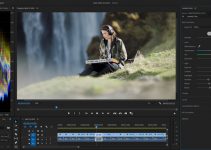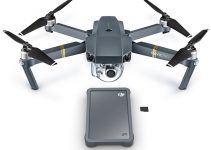AMD’s Ryzen processor line has made a huge splash in the PC world as a more powerful and less-expensive alternative to Intel’s proprietary chips. Mainly due to the lower pricing and advanced processing power, many folks in the community have already changed allegiances and waved the red flags of AMD by switching their own computer systems to run on the Ryzen platform.
One of those content creators seems to be Dmitry Novoselov of HardwareCanucks who decided to take the leap roughly four months ago. His primary workload consists of constant video editing in 4K, requiring as much computing power as possible just as most content creators out there who predominantly work with ultra high-resolution videos on a daily basis. Having that in mind, let’s find out whether the performance boost provided by the Ryzen 7 processor was enough to justify the switch from Intel to AMD.
First and foremost, there’s no doubt that moving to Ryzen has clearly brought some performance improvements in the HardwareCanucks’ workflow, especially when considering the fact that the team was using an older processor architecture released in 2015. From the benchmarks shown in the video, the Ryzen system unambiguously resulted in faster render times than the Intel’s Skylake workstation.
Furthermore, multitasking has become much easier to perform thanks to the Ryzen processor’s updated specs, according to Novoselov. For instance, the Ryzen architecture allowed him to edit 4K media, retouch photos in Photoshop, download games on Steam, etc., all without compromising the rendering performance when exporting 4K material for upload.
While the benefits were definitely noticeable, there were also several performance issues that were encountered along the way. For instance, dropped frames were a consistent issue in Premiere Pro CC, affecting timeline performance and forcing Novoselov to pre-render or reduce playback quality when reviewing edits.
Besides the inconsistent editing performance, some compatibility issues popped up as well. These include malfunction of Novoselov’s SilverStone external hard drive bay which would not work properly on the system alongside some notable performance decreases of his DIY M.2 SSD USB.
To tackle these pitfalls, Dmitry performed a clean install of his operating system, which is a necessary step highly recommended by AMD when upgrading. By completing this essential step of the process, in addition to taking time to painstakingly install and update drivers, Novoselov finally managed to fix dropped frames issue in Premiere Pro CC. What’s more, he was able to use memory with higher clock speeds as a result.
Overall, despite the inconveniences brought upon the Ryzen system, it turns out that the switch was well worth it. Because of the faster render times and the ability to multitask seamlessly, Dmitry was able to produce videos at a much faster rate compared to using the Intel system, thus saving time and money in the long run. The significant time savings, in Novoselov’s opinion, were enough to justify the minor compatibility issues and current lack of application optimisation.
So, if you’re a video editor thinking about switching to Ryzen, note that while you will see increases in performance, you should take the various app and driver updates as a serious consideration. Also, be careful with your hardware selection and make sure to opt for components that will allow you to take full advantage of Ryzen’s processing power.
[source: HardwareCanucks]
Disclaimer: As an Amazon Associate partner and participant in B&H and Adorama Affiliate programmes, we earn a small comission from each purchase made through the affiliate links listed above at no additional cost to you.
Claim your copy of DAVINCI RESOLVE - SIMPLIFIED COURSE. Get Instant Access!




